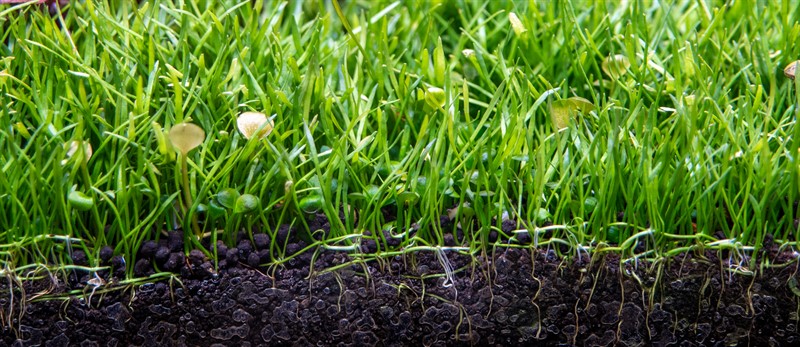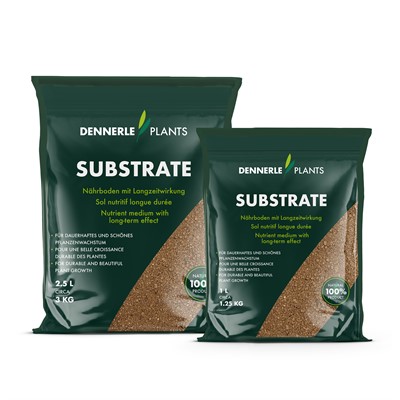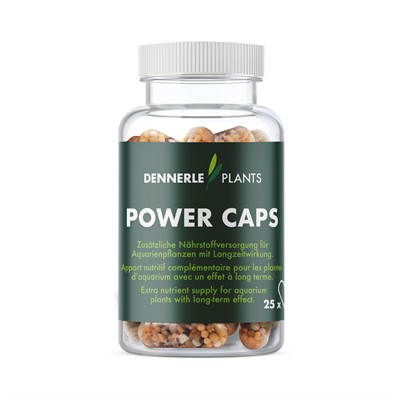
For most aquarium plants, nutrient uptake via the roots is vital. In nature, too, our plants grow in nutrient-rich substrate. Especially the so-called swamp plants such as Echinodorus or Cryptocorynes take the nutrients they need from the soil with their extensive roots.
Besides being an important source of nutrients, a substrate in the aquarium is also a huge biological filter. Useful bacteria and other microorganisms use the different grain sizes of the substrate as an optimal colonisation area. The most important task of these bacteria is the biological detoxification of the aquarium through nitrification.
How much substrate do I need for my aquarium?
You can calculate the total amount of substrate needed with the following formula:
(length of aquarium in cm x width of aquarium in cm x height of substrate in cm) / 1000 = litres of substrate.
Calculation example for a 60x30x36cm aquarium and a substrate height of 5cm: (60x30x5)/1000=9Litres. For calculations that include a higher substrate in the rear area, simply use an average value between substrate height in the front and in the rear. When in doubt, it is always better to have a little too much substrate and not use it all than the other way around.
Tip: Observe the recommended minimum quantities and combine the products to achieve synergy effects.

Dennerle Plants Soil
Soil is rich in nutrients and is therefore particularly suitable for planted aquariums. In addition, Soil is an active substrate that lowers the carbonate hardness (KH) and stabilises the pH value. Many aquarium inhabitants and also many aquarium plants prefer soft, slightly acidic water as in their tropical habitat. Soil is a natural product and consists of 100% valuable clay minerals. For filter bacteria, the porous 2-3mm grains offer an optimal colonisation area to promote biological filtration. Soil substrate is ready out of the bag. A layer of gravel is not necessary.
Soil 3 L Art. 31000 | Soil 9 L Art. 31001
Declaration
W/W: N 0,332%, P0,094%, K 1,090, Mg 1,900%, S 0,000%, B 0,000%, Cu 0,000%, Fe 1,520%, Mn 0,030%, Mo 0,000%, Zn 0,000%
Use: Fill Soil substrate directly from the bag into the aquarium. For foreground plants we recommend a minimum height of 4-5cm, which should rise towards the back. Soil that rises towards the back makes the aquarium look larger, because the depth effect is increased. A substrate height of 7-9cm in the background is sufficient for most plants. Depending on the design, the substrate in the background can also be considerably higher. Dennerle Plants Soil can be used as the sole substrate. An additional bottom layer of long-term nutrient soil, such as the Substrate, is not necessary, but can be used for particularly long standing times.
Soil substrate is very rich in nutrients and initially releases more of them into the water. In a freshly set up aquarium with a low plant mass and few filter bacteria, this can promote algae growth without appropriate countermeasures. For this reason, we recommend more frequent and larger water changes during the first 4 weeks (25-50% several times a week).
Tip: If you do not use up the entire bag, seal it airtight so that it does not dry out and can be used for your next project. See the substrate calculator to find out the amount of Soil you need for your aquarium.

Dennerle Plants Substrate
Substrate is a classic long-term nutrient bottom layer with a balanced nutrient depot for the growth of healthy and vital plants. Natural clay minerals and peat dust in concentrate form regulate the nutrient balance. Nutrients are released when needed and absorbed when there is an excess supply. The substrate is always used in combination with a top layer of gravel or soil.
Substrate 1 L Art. 31002 | Substrate 2,5 L Art. 31003
Declaration
W/W: N 0,200%, P0,002%, K 0,012%, Mg 0,014%, S 0,046%, B 0,000%, Cu 0,002%, Fe 0,000%, Mn 0,000%, Mo 0,000%, Zn 0,006%
Usage: As a classic nutrient medium, the substrate is filled into the aquarium as the bottom layer. We recommend a layer of Substrate approx. 1 cm thick, covered with 4-5 cm of gravel. A higher layer of substrate can be used in the back of the aquarium. However, this must also be covered with 4-5 cm of gravel. It is important that the substrate is not disturbed when designing and inserting the plants. The gravel layer prevents the nutrients stored in the substrate from being released into the water.
Tip: If you want to move plants, pull them out of the soil very slowly and not completely. Simply cut off the long roots just above the substrate. This way the substrate will not be stirred up. Finally, carry out a large water change. See the substrate calculator to determine the amount of substrate needed for your aquarium.

Dennerle Plants Power Caps
Power Caps are fertiliser capsules for additional nutrient supply in the substrate. Power Caps contain a perfect mixture of the macro elements nitrate (N), phosphate (P) and potassium (K) as well as valuable micronutrients iron (Fe) and trace elements. The capsules are inserted deep into the substrate at the base of the plant to promote root growth, vitality and vigour. Power Caps are ideally suited for strongly rooting species such as Echinodorus, Cryptocorynes and many stem plants. After years, a substrate is often depleted of nutrients. Dennerle Plants Power Caps can replenish or supplement these nutrient gaps.
Power Caps 25x Art. 31004
Declaration
N 21,000%, P7,000%, K 11,000%, Mg 2,000%, S 0,000%, B 0,000%, Cu 0,010%, Fe 0,100%, Mn 0,060%, Mo 0,000%, Zn 0,000%
Application: As a supplemental fertilizer or as a first aid for nutrition deficiency symptoms, simply insert 1 capsule per 10x10cm deep into the substrate. Use tweezers to place the Power Caps as accurately as possible into the substrate. The exact timing depends on different factors such as CO2 supply, light intensity and plants. To prevent nutrient deficiencies we recommend to start supplementing the fertilizer already 2-3 months after the new start of the aquarium. The beads contained in the capsules release the nutrients gradually. The shell dissolves over time, but the beads do not. These can simply remain in the substrate and are absolutely harmless to both animals and plants.
| |
Substrate - |
Soil substrate |
| Without CO2 |
every 12 weeks |
every 16 weeks |
| CO2 + low light |
every 8 weeks |
every 12 weeks |
| CO2 + high light |
every 4 weeks |
every 8 weeks |
Tips: Use Power Caps already when setting up your aquarium to enrich the substrate with additional nutrients right from the start and thus achieve particularly lush plant growth. Use 2-3 capsules per 10x10cm area for particularly large solitary plants to provide them with maximum nutrients.
Back to the overview